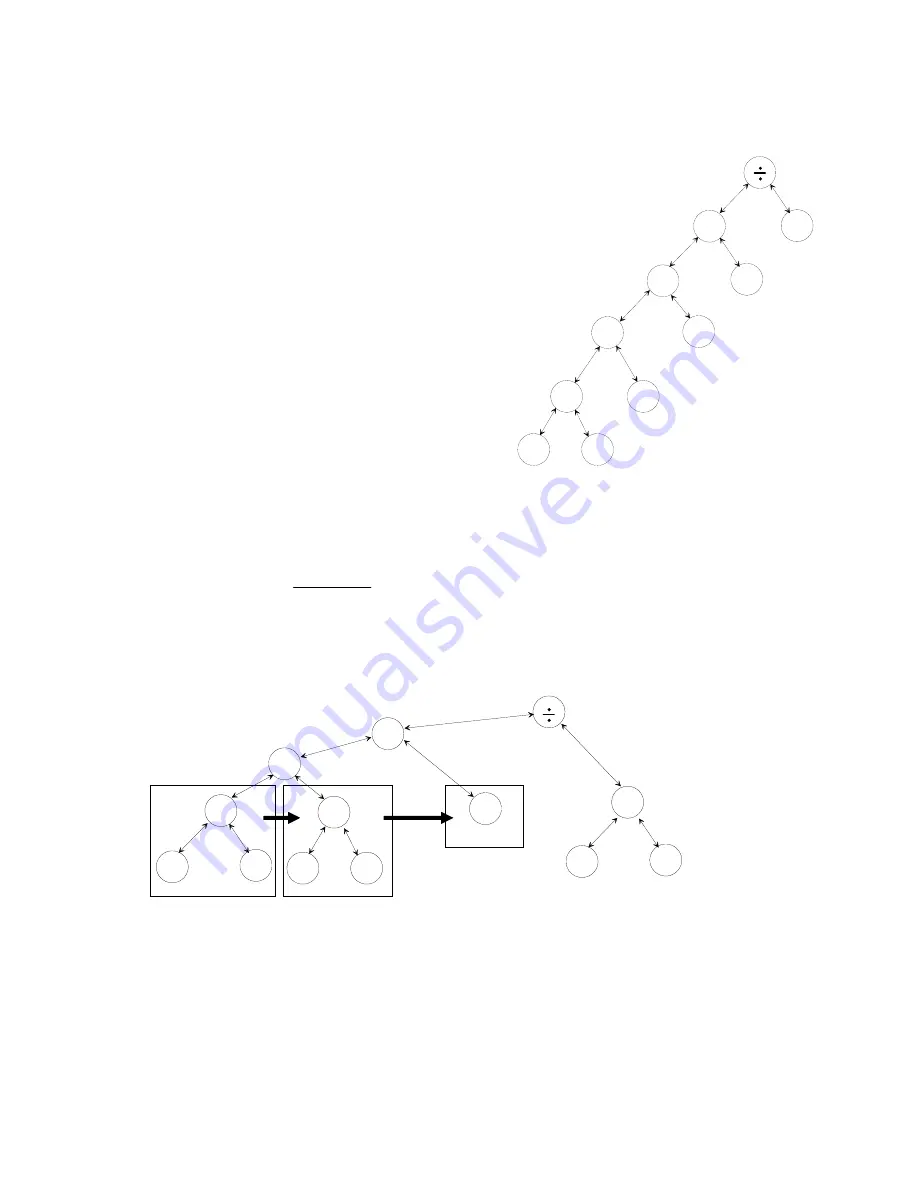
5
After typing the 5, press up arrow once to highlight that node S. If you now press left arrow you will find that
the highlight will jump horizontally to node A, highlighting the entire numerator. Pressing
+
81
*
^
X
A
B
E
C
D
2
3
G
Q
P
R
^
2
down arrow four times moves down through the tree from A to P to B to D to F.
To access and change the power of 2, press up arrow twice to move up to
S
node B, then press right arrow to move from node B to node Q. If you now
press
+
and
3
you will find that this is added to the power, with brackets
applied as required. Try redrawing the tree as it would now appear.
Node Q will then become an addition with two new nodes below.
Finally, exit the CAS by pressing
HOME.
Note: There can be a problem with the way that the
X
2
button is handled. If you try going back through the
same exercise but pressing the
X
2
button at step 3
F
you will find that this makes it impossible to access
and edit the power because the
X
2
operation is
stored differently. This is purely a personal preference generally.
2
x
+
4
x
+
3
Another example of a tree for
is given below to illustrate the result of having three terms in part
x
−
2
of the expression. It can be seen that despite having three terms the result is still a binary tree. The squares
show the terms which will be highlighted in turn if the
x
2
term is highlighted and then the right arrow is
pressed.
*
_
X
4
3
^
2
+
+
2
X
X
332
















































